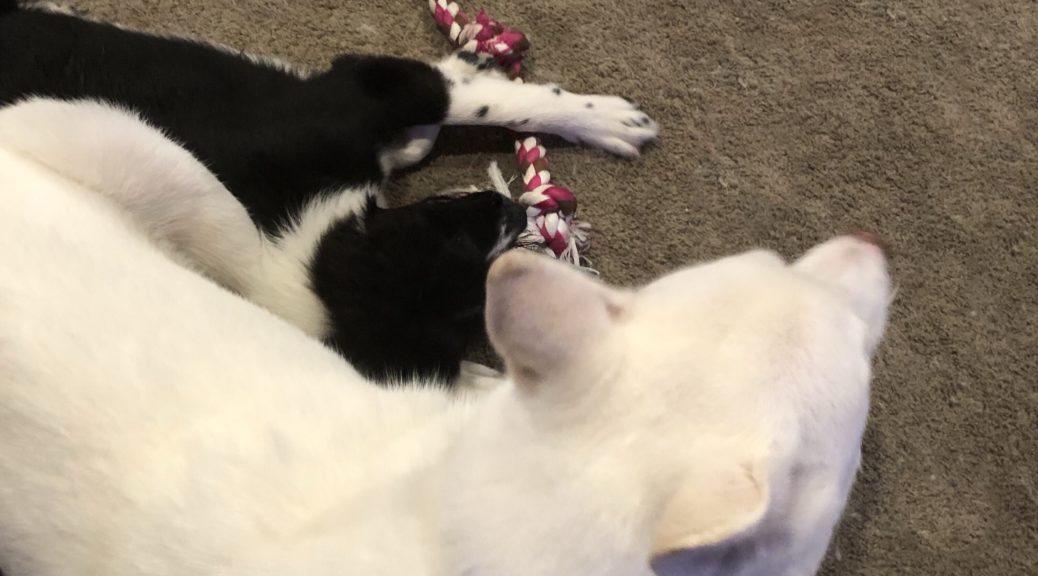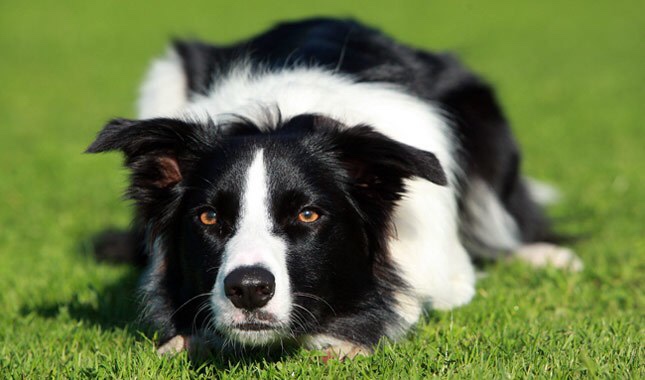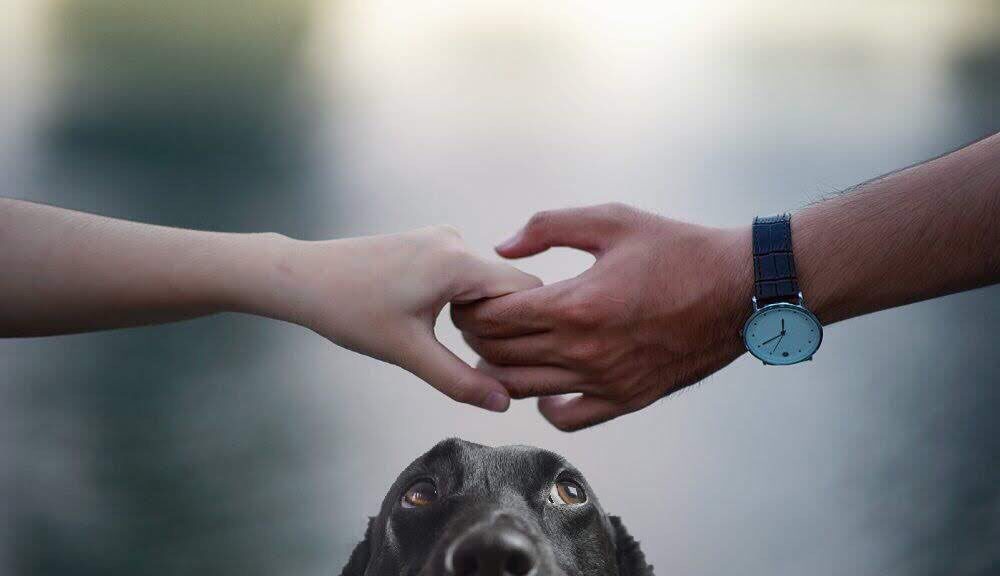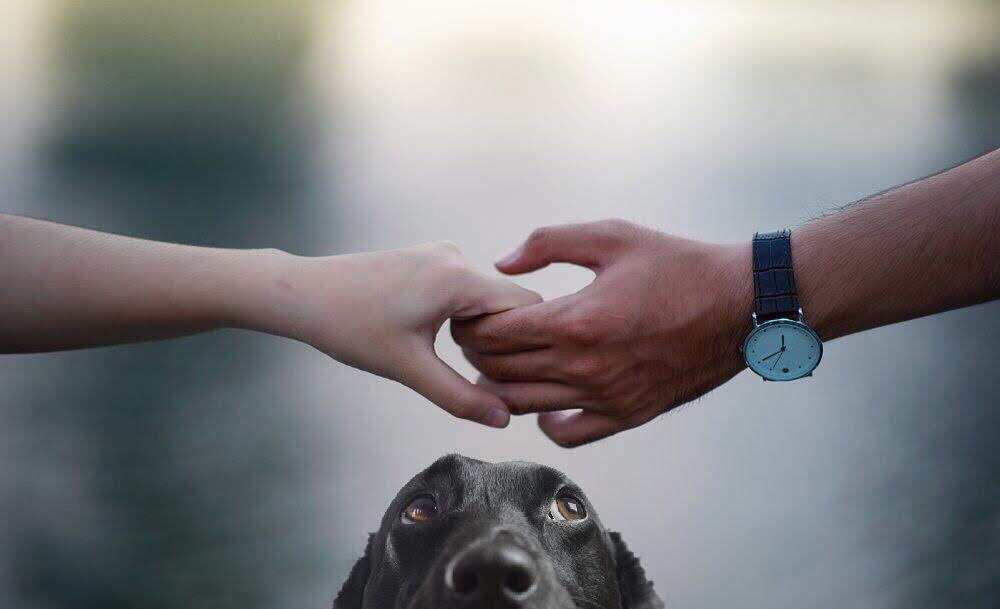Dogs love to play, right? And they love their toys! So it’s natural to think that involving toys in a play session is totally normal and okay to do with multiple dogs. And it is, in some situations.
Toys can be a great addition to your doggy socials, but they can also be a source for resource guarding in some dogs. Which can lead to them having words or worse, with another unknowing dog who maybe wants to try to play with them, with that toy.
As a general rule; if I am inviting a friend dog over for the first time to hang out with my social boy who loves to play? I pick up all the toys and put them away. A new play date should be just that, a date between the pups. This keeps the environment as neutral as possible and allows the dogs to figure each other’s personality and play styles out. They focus attention on each other and will have a good time! I will continue to not allow toys between friends until they’ve built a good solid relationship with one another – after several play sessions, then I will slowly introduce toys to their dates. Which I’ll describe down below.
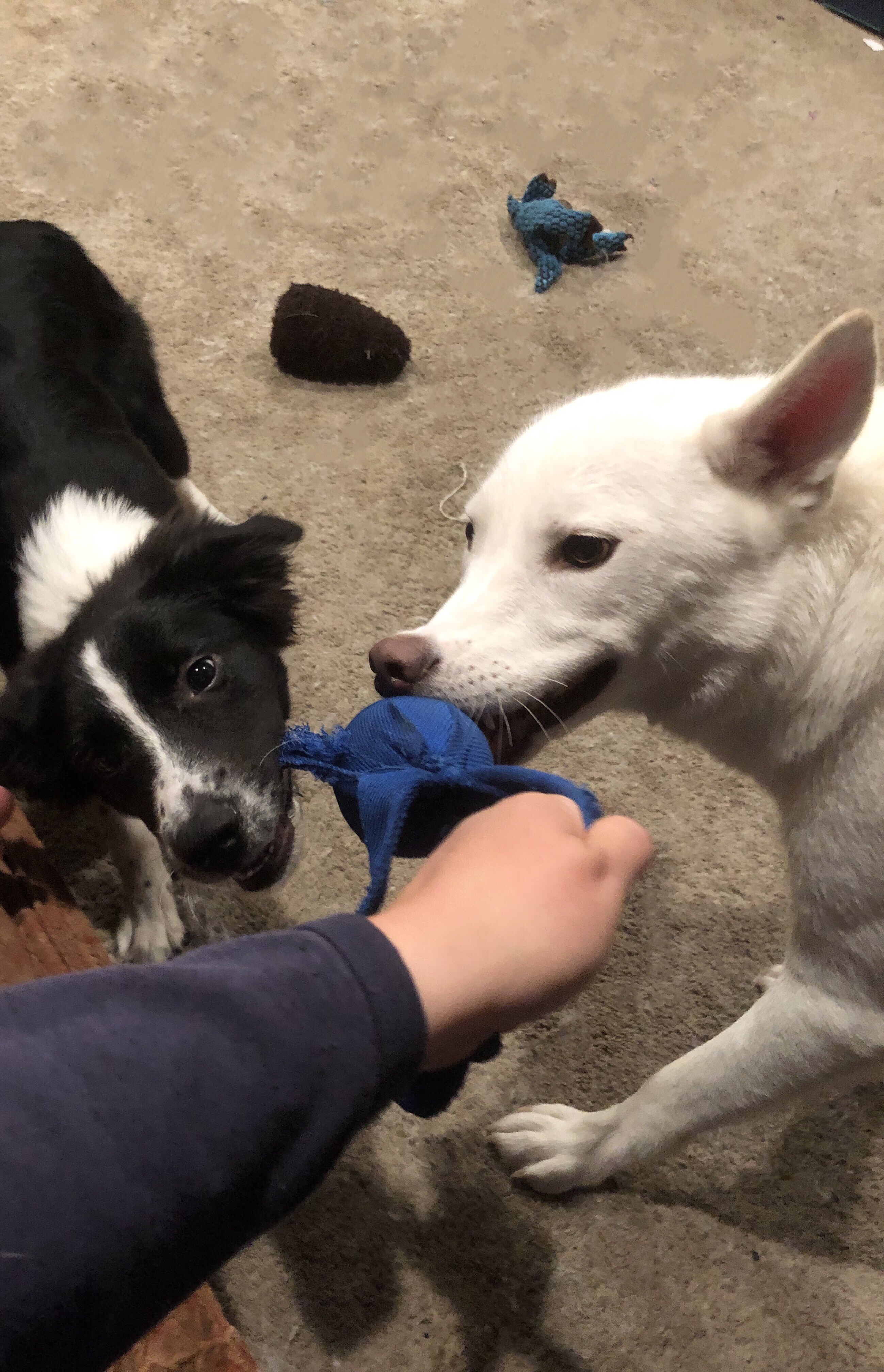
So, what about pack mates? The way that I have pack mates integrate has many steps and toys are a step in their bonding process that comes in time. Let’s say you started off with one dog. You have that pup for about a year or two and they’ve got their set of toys; some are favorites, most are fun, some are “eh”. Now you bring puppy into the mix. Puppy obviously needs TONS of toys and stimulation to keep them happy and nondestructive. But I don’t allow puppy to just come in and take over older dogs toys. That can cause undue stress in your pack and could lead to problems later on. Puppy gets their own area to acclimate / potty train / stay out of trouble / and play with THEIR set of toys. Baby toys. Teething toys that are softer for their baby mouths, etc. In some cases the older dog will bring some of their toys to the puppy – and those are the ones I start with.
Just like a play date, I have my new puppies play with my older dogs without anything around. Just for the first few days. I don’t allow full integration right away, it’s just how I do it, so when the dogs do hang out (and that is most of the day – when I’m there to monitor), they figure each other out and baby begins to learn their place in the family. This also strengthens the bond between dogs because, again, they only have each other to focus on. When I’m not watching and they go back to their puppy pen, everybody gets their own toys back.
This lasts maybe the first week. After that, I begin to add toys to their play. When I do, I bring out twice as many as there are dogs. The toys I bring out are the ones big dog brought to little dog to share through the pen, the bland toys, the “eh” toys. In other words I bring out all the toys that don’t mean much to the big dog. I keep their favorites up until MUCH later in their relationship. Tug toys, ropes, long floppy toys, things that they can both enjoy together and both have enough room to hold onto it at once. This minimized any jealousy or upset misunderstandings between the two. Gradually they get more and more toys to play with together, as they learn to share.
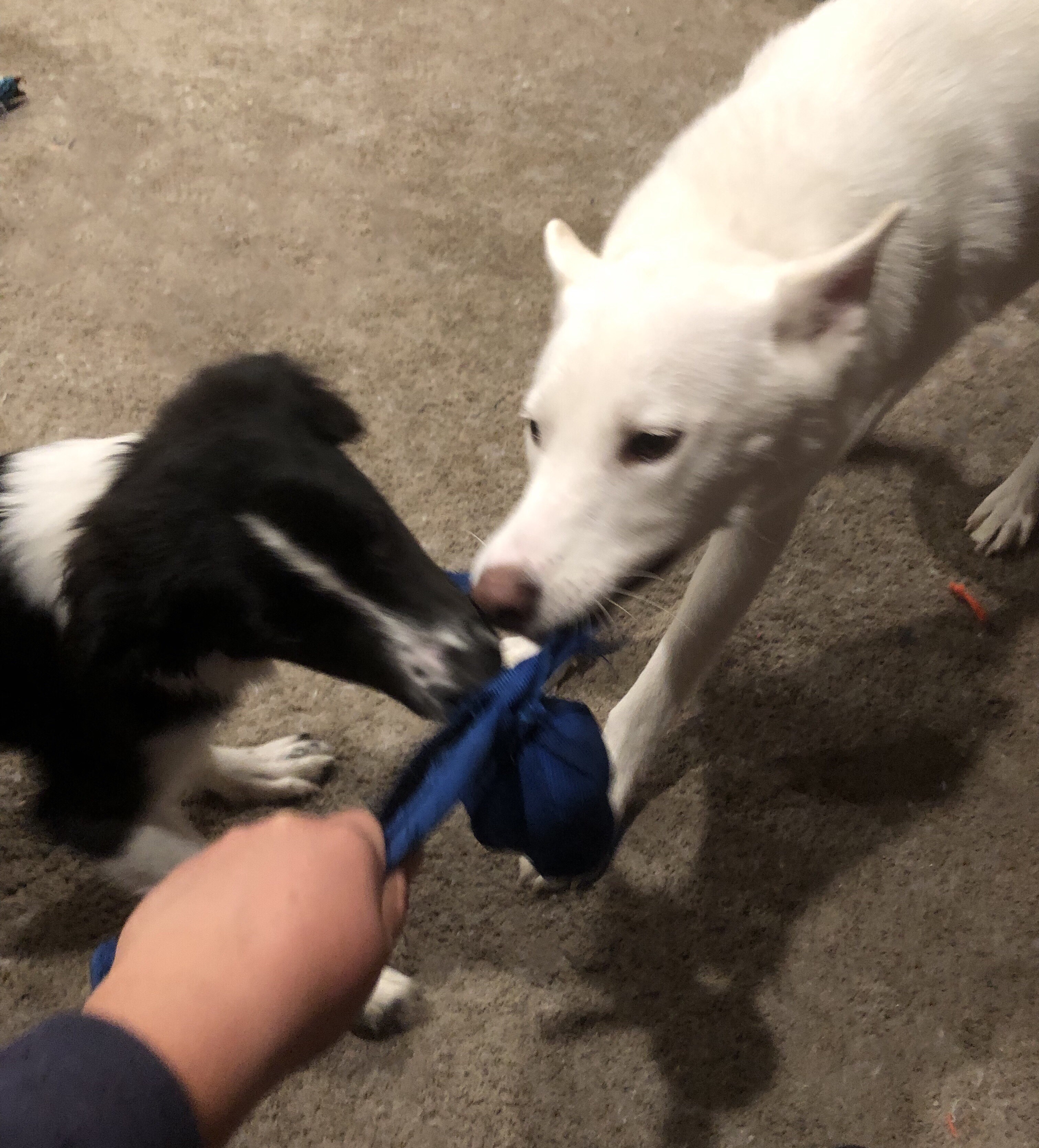
If I ever see someone getting possessive over an item I will take it and claim as mine. This keeps order in the pack, feelings from getting hurt, and prevents grudges from being built. Whoever that toy belonged to originally, I will return it to them when the puppy goes back up.
All of this doesn’t take long. They learn to share pretty quickly given plenty of time to do so. I rotate toys often and bring new ones out to keep things interesting between them. Also when you have multiple dogs, your toys get destroyed that much faster!
So what about a fully integrated pack and new toys? I ALWAYS buy multiple and always give them to the whole pack at the same time. This way they see it as all of theirs not just singularly theirs. When they receive the new toys together – they’re more likely to share them equally. Always remember though, if you’re giving something new, have an equal number of new toys to dogs, or equal +1 is better!

